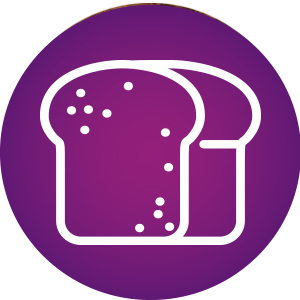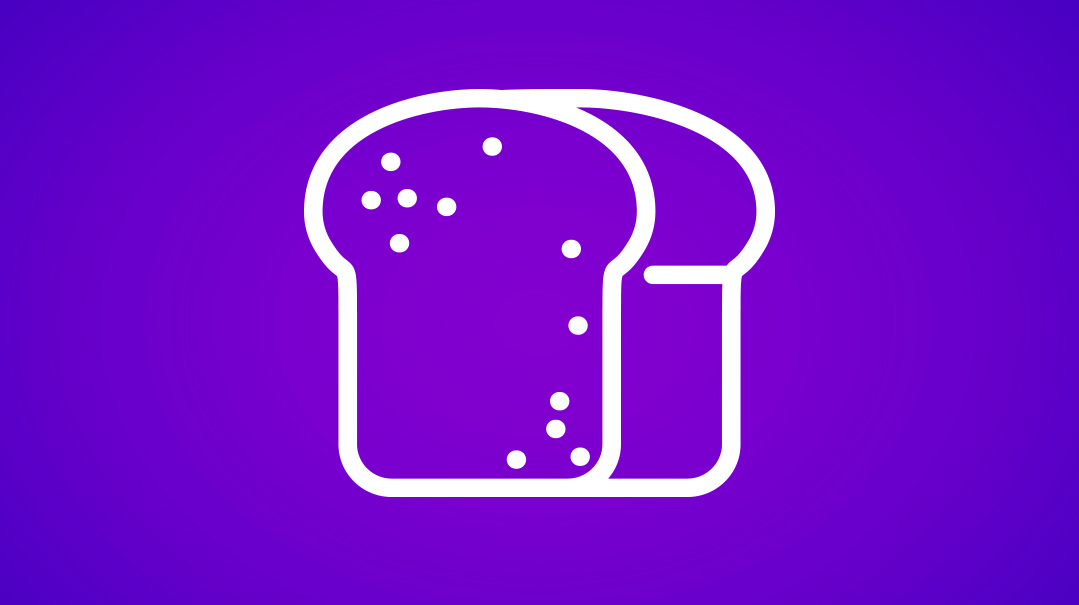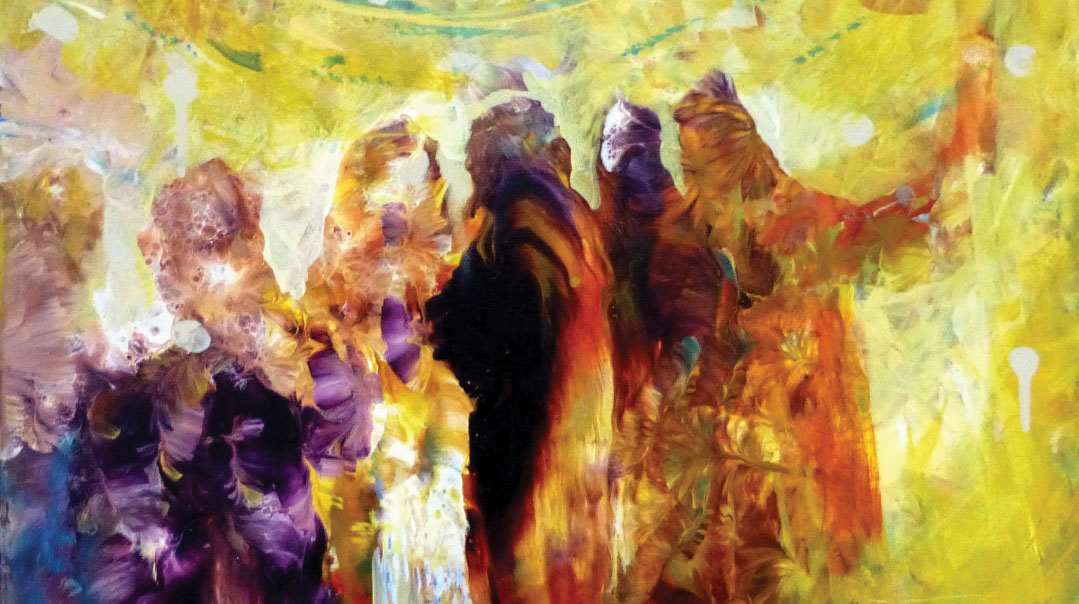Longing for Redemption

Even at times of joy, there is a gaping hole in our landscape
Bircas Bonei Yerushalayim

Yerushalayim and the Beis Hamikdash figure prominently in our tefillos, but how closely do they touch our hearts? Our frequent pleas for their restoration in Shemoneh Esreh and Bircas Hamazon aren’t always passionate. For many of us, it’s only on special occasions that our hearts move along with our lips — perhaps during the Kinnos of Tishah B’Av, or at the exultant cry of “L’shanah habaah b’Yerushalayim” at the close of Yom Kippur and the Pesach Seder.
It takes a receptive, sensitive heart, a core attuned to the realities of Creation, to respond to Yerushalayim on an ordinary day. Beis Yosef tells us of such an individual, one whose emotional reaction to the Churban precipitated a custom related to Bircas Hamazon. This person was once reciting the third brachah of Bircas Hamazon, bircas bonei Yerushalayim, when, overcome with anguish and grief, he seized a table knife and plunged it into his body. Since then, we cover or remove all knives on the table prior to bentshing.
The third brachah of Bircas Hamazon, the last of the Biblically mandated blessings, was originally written by Dovid Hamelech and Shlomo Hamelech to celebrate the respective occasions of the building of Yerushalayim and the building of the Beis Hamikdash — an era of glory, joy, and unity for the nation. After the Churban, the brachah was rewritten into a plea for the restoration of what we’ve lost.
What’s the Connection?
Although this brachah refers to momentous junctures in our history, what’s puzzling is that these topics don’t seem to be directly connected to the main topic of Bircas Hamazon — our sustenance at the Hand of Hashem.
Let’s trace the development of this theme. We began the first brachah by thanking Hashem for our food, and in the second brachah, we expressed gratitude for Eretz Yisrael, the source of our food. Once we’ve thanked and praised Hashem, it’s then appropriate to petition Him with our needs. This formula follows the dictum of Chazal: One should always express praise to Hashem before presenting his requests.
Thus, in the third brachah, we ask Hashem to continue providing for us: re’einu, zuneinu, parneseinu, v’chalkeleinu — tend us, nourish us, maintain us, and sustain us… may we never be in need of the gifts of man, but only of Your generous, holy Hand.
What’s striking about these pleas is that they don’t stand alone. They’re packaged inside another appeal, which seems to be an unrelated topic: the rebuilding of Yerushalayim. The brachah starts with Racheim: “Have compassion, Hashem our G-d, on Yisrael your people, Yerushalayim your city, Tzion your dwelling place, the kingship of David your anointed one, and the holy, great House that bears Your name.” We then present the requests for sustenance, after which we conclude the brachah by returning to the topic of Jerusalem. “U’venai — rebuild Yerushalayim, city of holiness, speedily, in our days. Baruch Atah Hashem, Bonei b’rachamav Yerushalayim, amein.”
Why is a prayer for parnassah wrapped inside the topic of Yerushalayim? The quick answer is that Dovid and Shlomo recognized that the ultimate, permanent center of our nation’s sustenance is Yerushalayim. Hashem’s Presence in the city, particularly in the Beis Hamikdash, brought brachah to the crops and produce. Our Sages indicate that korbanos offered on the Mizbeiach were a source of sustenance for the nation, and that the inferior quality of food today is a result of the Churban Beis Hamikdash. It’s in this spirit that we ask Hashem to tend us, nourish us, maintain us, and sustain us.
Yet our longing for Yerushalayim, expressed many times a day, and on many occasions throughout the year, is far more than a desire for a better physical reality. It’s the simple recognition that, although provisions may be adequate, our lives are incomplete without the rebuilt city, the Beis Hamikdash, and malchus Beis Dovid.
Completion and Revelation
Even at times of joy and satiation, we can’t overlook the gaping hole in our landscape. This is why a chassan wears ashes under the chuppah, Seder participants yearn for a better future, and a Jew finds reason to stab himself. To understand this more deeply, let’s take a closer look at the key items mentioned in this brachah.
The title “Yerushalayim” is a contraction of names that were conceived by two individuals. Malkitzedek (Shem ben Noach) called it “shalem,” the place of perfection and wholeness. Avraham called it “yireh,” the place where Hashem sees us and where He is seen. These two themes, completion and revelation, encapsulate the essence of our holy city.
In his study of Bircas Hamazon, the Maharal tags the blessing of Bonei Yerushalayim with the name “hashlamah,” completion, for the rebuilding of the city and the Beis Hamikdash and the establishment of malchus Beis Dovid are the finishing steps of the Geulah. This is evidenced in the famous ode of Dayeinu, which lists the kindnesses Hashem has done for His people. The closing stitch describes the final, ultimate gift: “And He has built for us His chosen House.”
In a similar vein, Rav Yehonasan Eybeschutz writes, “One must shed tears for the restoration of Yerushalayim and the Davidic dynasty, for this is the purpose and perfection of all mankind. If we do not have these, of what value is life?”
To emphasize that the rebuilding of Yerushalayim is the end goal of our aspirations and achievements, the Maharal explains, we close this brachah in bentshing with “Bonei b’rachamav Yerushalayim, Amen,” incongruously answering Amen, the traditional end word, to our own brachah. Furthermore, the brachah contains seven specific requests, beginning with re’einu. Seven is the number that signifies completion: Creation was completed in seven days, and the Hebrew word for seven, sheva, is related to the word “sevei’ah,” denoting satiation and fulfillment.
We don’t pursue the restoration of Yerushalayim, the Beis Hamikdash, and malchus Beis Dovid in order to realize cultural achievements or nationalistic aims. We seek, instead, as Avraham indicated in his naming of the city, the revelation of Hashem’s presence.
When Tehillim (48:3) describes Yerushalayim as the “fairest of all sights, joy of all the earth,” the psalmist is not merely admiring its physical beauty. Chazal relate that Yerushalayim is the meeting point of the upper and lower worlds, and Pirkei Avos tells us of ten miracles that took place there regularly. As Rav Moshe Wolfson shlita puts it, normally a heavy cloak of nature conceals our Creator, but in Yerushalayim the cloak is thin and almost transparent.
This is the beauty of the Ir Hakodesh.
The Gemara (Bava Kamma 97) speaks of a coin that had a picture of Yerushalayim on one side, and a picture of Dovid Hamelech and Shlomo Hamelech on the other side. This implies that the malchei beis Dovid, kings of the Davidic dynasty, were deeply connected with the holy city. Ideally, the king recognized that he wasn’t an independent sovereign, but a representative of malchus Shamayim. As such, his primary goal wasn’t to wage war or enact laws, but to model, instill, and enforce a unified obedience to the King of Kings. This ensured that the nation would merit to permanently dwell in their ideal home, Yerushalayim.
Handclasp with Hashem
And finally, we arrive at the Beis Hamikdash, the place on earth where one felt the Shechinah most strongly. The splendor of this magnificent edifice was a reflection of the nation’s inner state of connection and dveikus to Hashem.
Rav Tzaddok HaKohein posits that the earliest source in the Torah for a particular word is crucial to its understanding. The word “mikdash” first occurs in the following context: “The mikdash that You, Hashem, have formed with Your two Hands (Shemos 15:17).” Rav Moshe Shapira tells us that the “two hands” represent a relationship, or covenant, between two parties, for a handclasp expresses that two entities are joining together to form one unit. The Beis Hamikdash was a symbol of our mutual covenant, for it was there that we dwelled together with Hashem.
The Beis Hamikdash was a place of clarity and security. When one entered, he had no existential doubts, philosophical questions, or theological hesitations. He felt the presence of Hashem as an absolute reality.
During the three pilgrimage festivals, the Kohanim would roll up the curtain that screened off the Kodesh Hakodoshim, the holiest chamber, so the nation could glimpse the Keruvim. And when they saw these cherubic figures on top of the Aron facing each other and embracing, the Kohanim would cry: “Look at Hashem’s love for you!”
Rabbi Shlomo Goldfinger, in an insightful essay on Bircas Hamazon, explains that it’s precisely this love that makes it appropriate to sandwich our wants and needs between Racheim and U’vnei Yerushalayim.
He notes, too, that the entreaties in this brachah are strident and demanding. “Nourish us! Maintain us! Sustain us!” They have none of the gentle tones — “may we never lack nourishment” — of the previous brachos. We are the child so secure in his parent’s love that he’s unembarrassed to ask for more, directly and repeatedly. We allude to this familiarity near the close of the brachah: “May we never be in need of the gifts of men nor of their loans, but only of Your open, full hand, so that we won’t be shamed nor embarrassed for all time.”
In summary, we’ve given three explanations for the inclusion of Yerushalayim in bentshing: Firstly, the dwelling place of the Shechinah is the source of our sustenance. Secondly, our physical sustenance loses purpose when we lack the Shechinah among us. And lastly, the very mention of Yerushalayim gives us confidence in our relationship with Hashem, making us feel safe to ask for our parnassah needs.
The Purpose of Longing
Yet our most pressing need is Geulah. Rashi in Hoshea (3:5) quotes a midrash that indicates that Klal Yisrael won’t be redeemed until they repent and beseech Hashem for three things: malchus Shamayim, malchus Beis Dovid, and the Beis Hamikdash.
Why does the Geulah hinge upon our petitioning? Won’t Hashem bring it when He sees fit?
If we were asked to define the measure of one who is truly righteous, we’d typically describe someone who’s focused on personal growth and on earning his portion in the World to Come. Mesilas Yesharim (Chapter 19) identifies another crucial dimension of avodas Hashem: concern for kevod Shamayim, the honor of Hashem.
Moshe expressed this when he sought Hashem’s forgiveness for Klal Yisrael’s sins: Why should the gentiles say that G-d has no power to redeem His people? The person who pierced himself with a table knife also demonstrated genuine anguish over the desecration of Hashem’s Name. In both cases, it was understood that Hashem’s honor is inextricably tied to the redemption of His people.
The Ramchal continues: “A person may think, ‘Who am I? Will it be my prayer that brings the redemption?’ ” This person errs in two ways. Firstly, one should never underestimate the potential impact of any individual’s prayer, for each person is of incalculable importance in Hashem’s eyes. Secondly, even if his prayer isn’t fulfilled, he has done his part, and “HaKadosh Baruch Hu rejoices over his concern for His honor.” The longing, in and of itself, is purposeful.
Sources include the writings of Rav Chaim Friedlander and Rav Moshe Eisemann.
May the inspirations derived from this article serve as an aliyah for the neshamah of my father a”h, Rav Shlomo Leib ben Chaim Yisroel, who was greatly devoted to the mitzvah of Bircas Hamazon.
Mrs. Shani Mendlowitz is menaheles of Bais Yaakov Seminary of Montreal, and a popular lecturer for women.
(Originally featured in Family First, Issue 735)
Oops! We could not locate your form.



